Fluctuating glaciersGlaciers are sensitive indicators of climatic change, on time scales ranging from tens of years (such as Alpine glaciers) to thousands of years (the Antarctic ice sheet). Glaciers give many clues as to whether they are advancing or receding, some of which are illustrated in this section. |
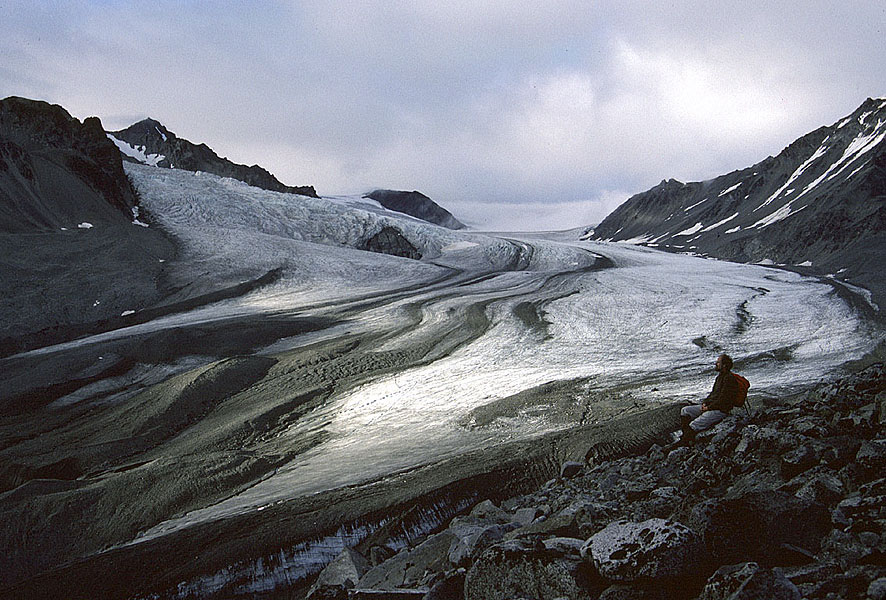 Gulkana Glacier in Alaska is one of the best studied in North America. This land-based glacier has thinned and receded dramatically in the last few decades, and now has the relatively flat snout that is typical of receding glaciers. Prominent moraines at the surface grow as more englacial debris is exposed by ablation. MH | 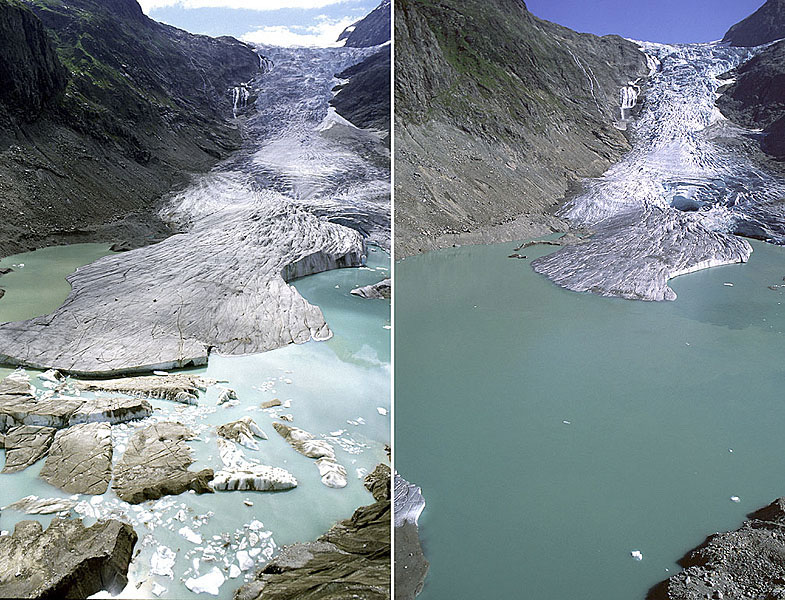 Triftgletscher in the Berner Oberland of Switzerland until recently filled the entire basin seen here in the foreground. Thinning of the tongue during the 1990s accelerated and as of 2001 a lake started to form in front of it. The ice became buoyant and rapid break-up of the snout is now underway. JA | 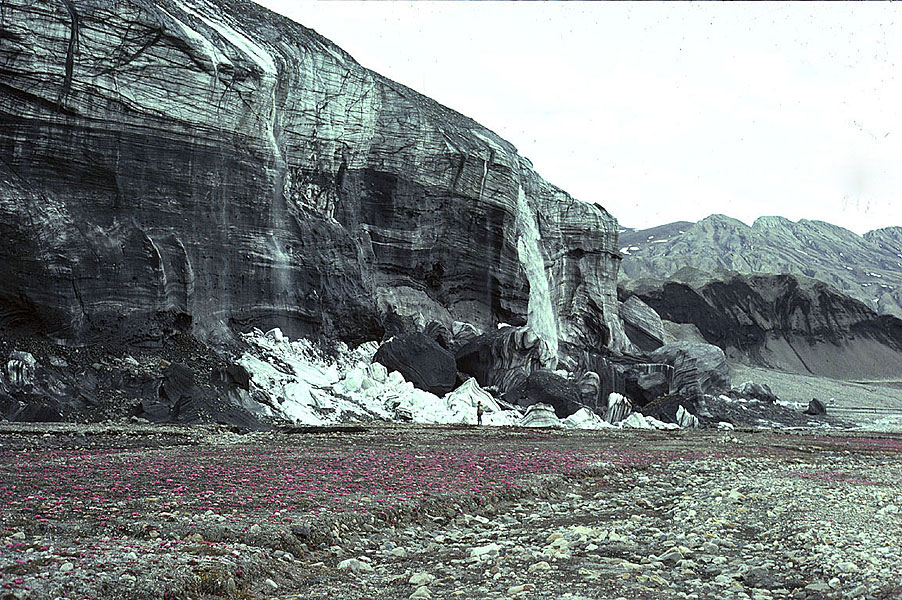 Thompson Glacier on Axel Heiberg Island has shown sustained advance since at least the 1960s when scientific investigations began in the area. The 30m-high cliff is characteristic of large advancing polythermal glaciers. In this case it is not only overriding a ‘meadow’ of well-established purple saxifrage, but is also pushing up a large pile of river gravel. MH | 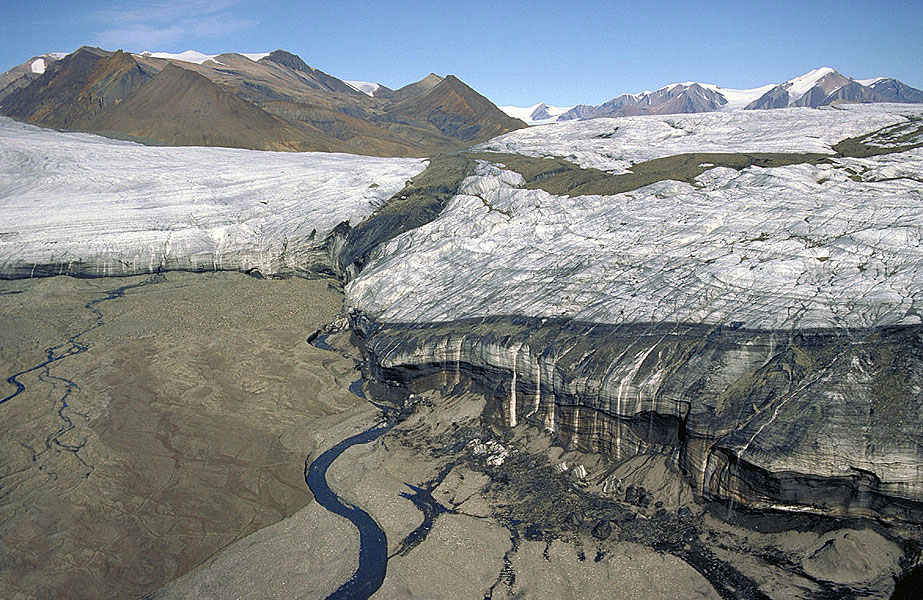 An oblique aerial view of the contact zone between the White Glacier (left) which is slowly receding, and Thompson Glacier (right), which is advancing (Axel Heiberg Island, Canadian Arctic Archipelago). Note the difference in the nature of the glacier frontal zones. JA |
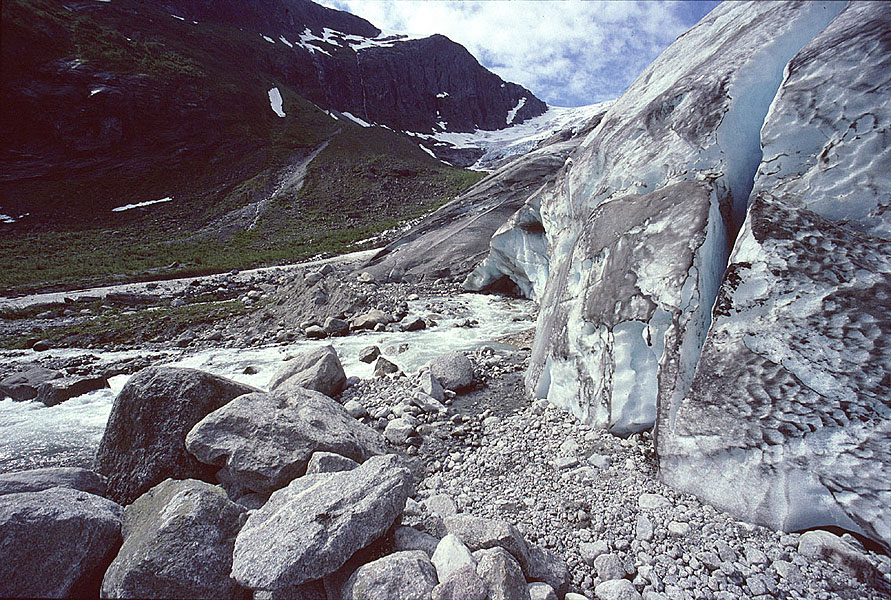 Small ridge of boulders (a push moraine), bulldozed by Bergstebreen in western Norway during a recent advance, but now separated from the glacier as it begins to recede. | 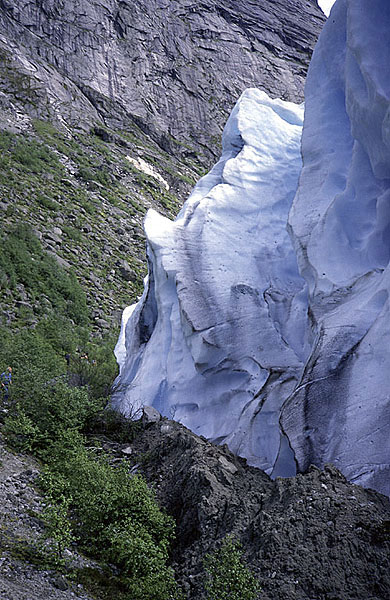 Advancing glacier, Brikdalsbreen, western Norway, flowing from the Josterdalsbreen ice cap, is pushing loose debris in front of it and ploughing into recently established birch woodland. The steep, heavily crevassed front is typical of such glaciers. MH | 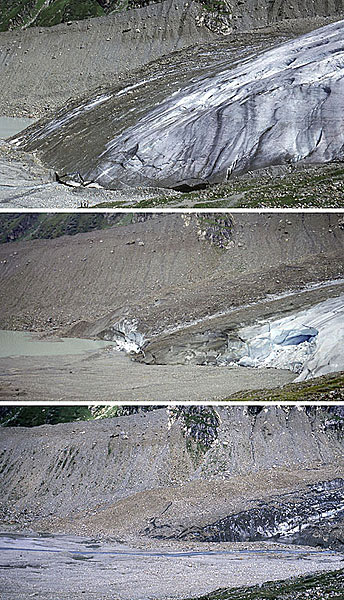 Receding glacier, Steingletscher, Sustenpass, Switzerland. The photos were taken in 1987, 1996 and 1999 from exactly the same location. A smooth gently sloping front and relatively few crevasses is typical of such temperate glaciers in a state of recesssion. | 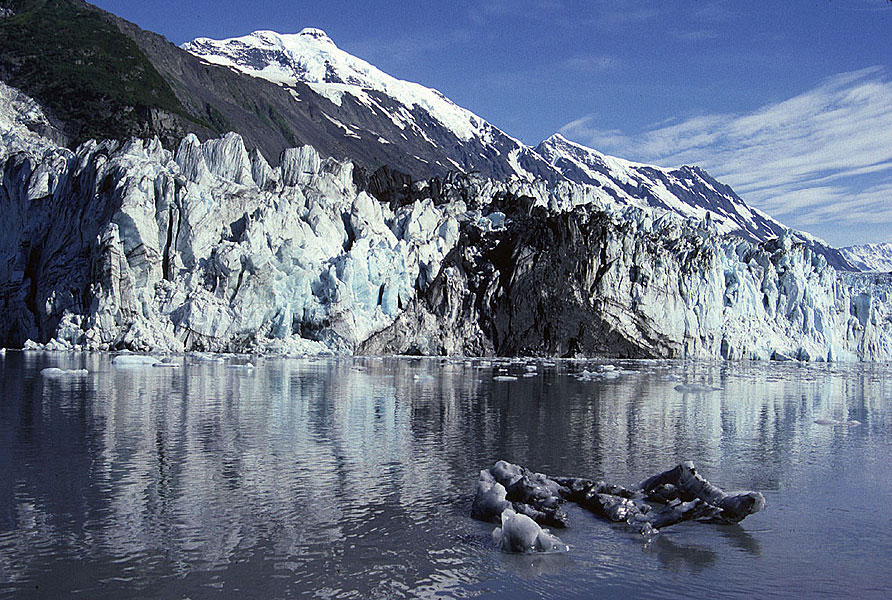 Tidewater glaciers fluctuate rapidly, and it is sometimes possible to find both advancing and receding glaciers side-by-side in areas like Alaska. Here Cascade Glacier in the Barry Arm of College Fiord, SE Alaska, shows the dark stripe of a prominent medial moraine. MH |
 Glaciers in the Alps have receded dramatically from their most historically recent maxima (the Little Ice Age, AD 1750-1850). This painting by Birman in 1826 illustrates the Mer de Glace, France soon after the glacier had reached its maximum extent (Gugelmann Collection, Swiss National Library, Bern). |  Tidewater glacier glacier cliff reflected in pool on melting sea ice, Nordenskiöldbreen, Billefjorden, western Spitsbergen. MH | 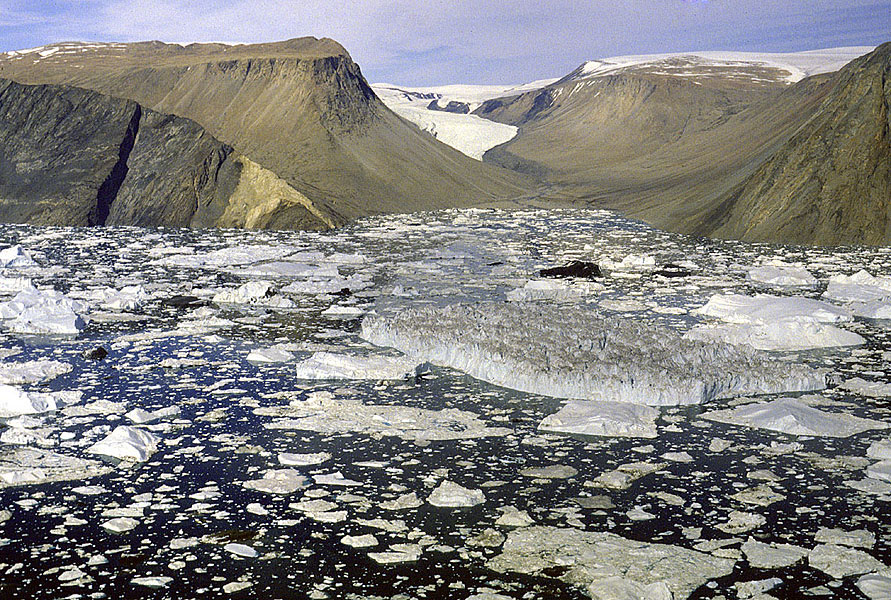 Fast-flowing glaciers in Greenland commonly discharge into fjords too deep for the ice to remain grounded on the bed, so they begin to float. Large tabular icebergs are produced by such glaciers, as here at the head of Nordvestfjord in East Greenland. MH | 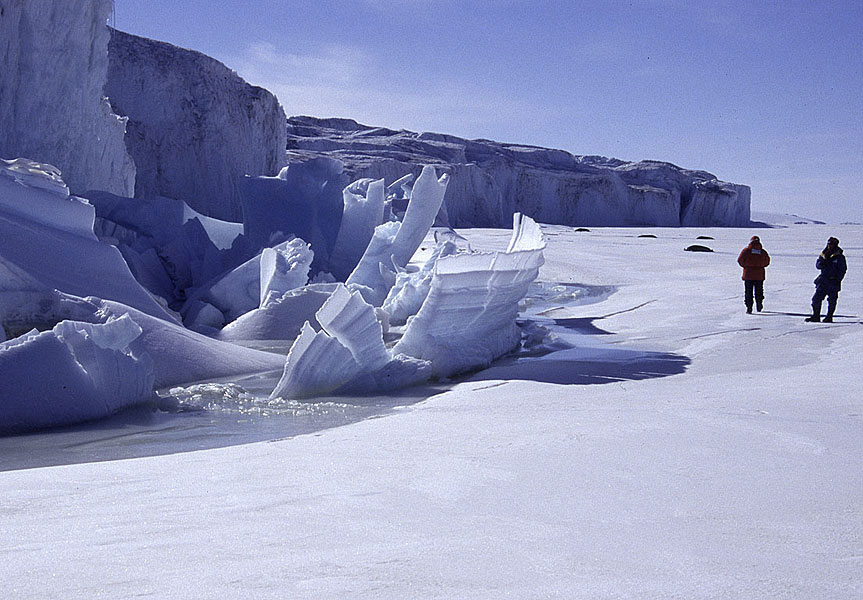 The floating tongue of Mackay Glacier, an outlet glacier from the East Antarctic Ice Sheet forms a vertical cliff that pushes up slivers of sea ice as it advances slightly each winter. MH |
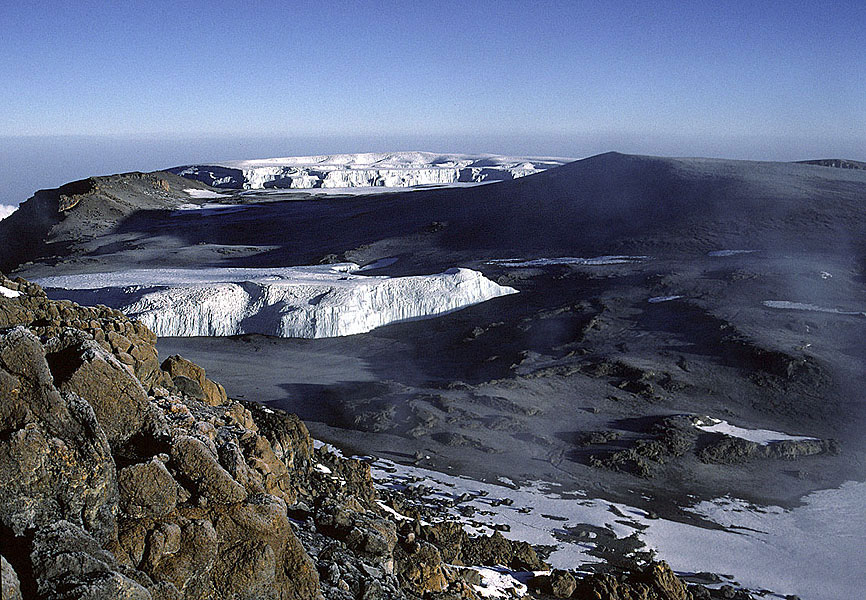 Kilimanjaro (5895 m) is a volcano and Africa’s highest peak. It carries remnants of a glacier that is in danger of disappearing totally within the next two decades. Vertical ice cliffs along the glaciers margins are a result of intensive solar radiation (Photograph courtesy of Walter Hauenstein). |  Arteson Raju in the Cordillera Blanca is dominated by the peak of Nevado Pirámide. Peruvian glaciologsts are undertaking mass-balance studies on this glacier, which provides a clear signal of the response of these glaciers to climatic change in the tropics. MH | 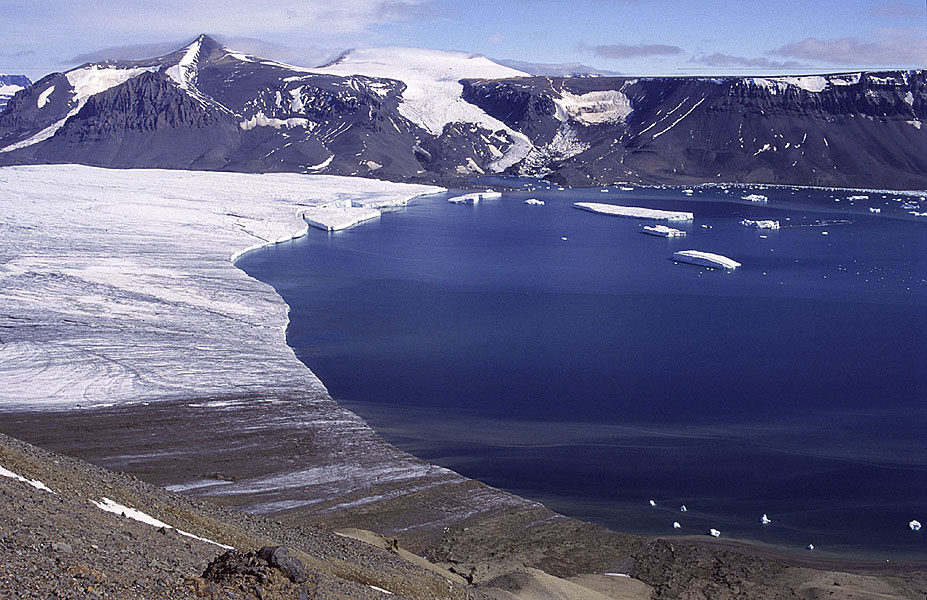 Floating tidewater glaciers occur in areas where the mean annual air temperature is well below freezing. Such glaciers produce tabular icebergs. Here, at the terminus of a glacier in Whisky Bay, James Ross Island, Antarctic Peninsula, icebergs are seen here in various stages of formation and decay. MH | 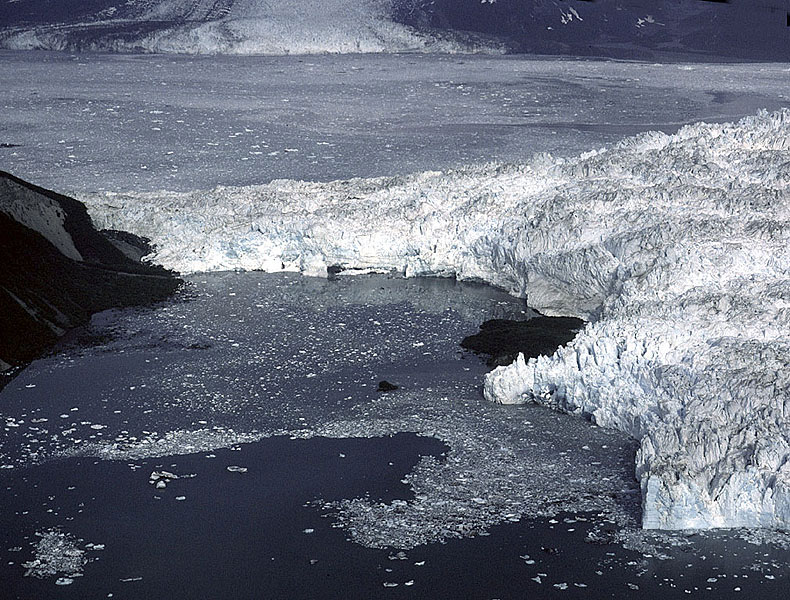 A rapid advance of a glacier front can be triggered by a surge of one of its tributaries, as when Valerie Glacier surged into Hubbard Glacier, southern Alaska in July 1986. A lobe of this glacier extended across a relatively shallow stretch of sea bottom and blocked the mouth of Russell Fiord (see also next image). MH |
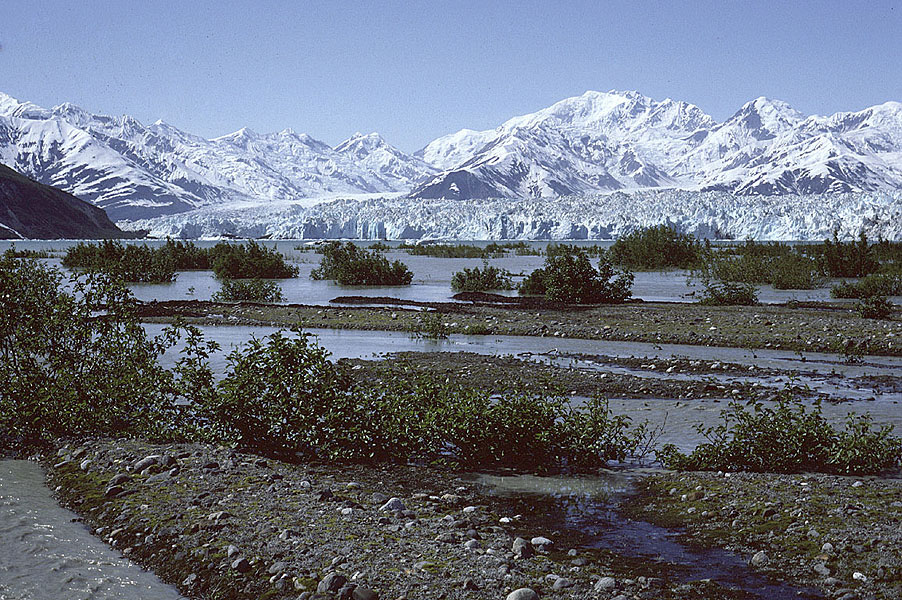 The ice-dammed Russell Fiord. This arm of the sea became a huge lake which in four months rose by 30 metres, flooding the adjacent forests, until the ice dam constraining the lake broke catastrophically. A similar blockage and dam failure also occurred in 2002. MH | 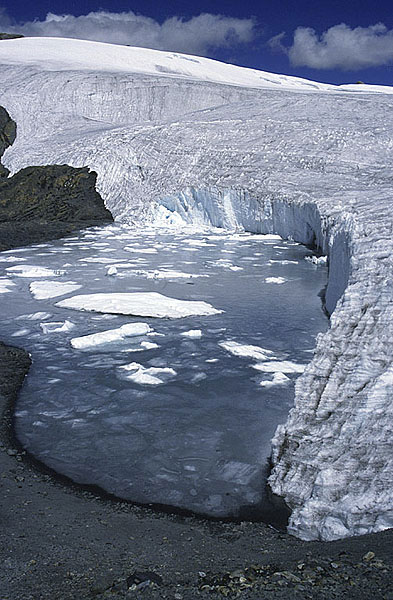 Pastaruri is a small rapidly disappearing icefield near Huaraz in the Peruvian Andes. Its summit is only just above 5000 m and at current rates of recession is likely to disappear within 20 years. At this altitude glaciers are now unsustainable in the tropics. MH | | |
| Photos: Michael Hambrey (MH), Jürg Alean (JA) |